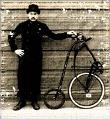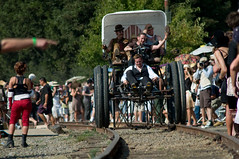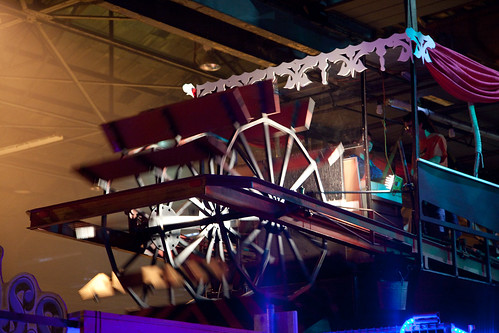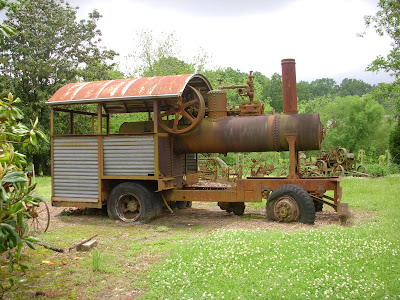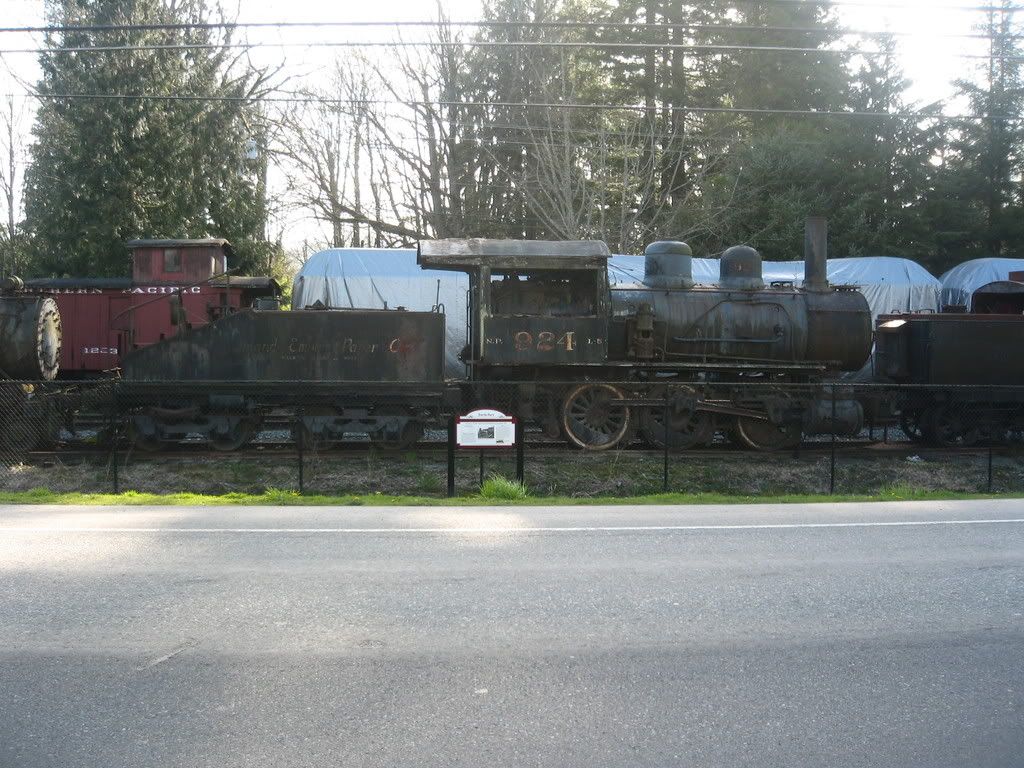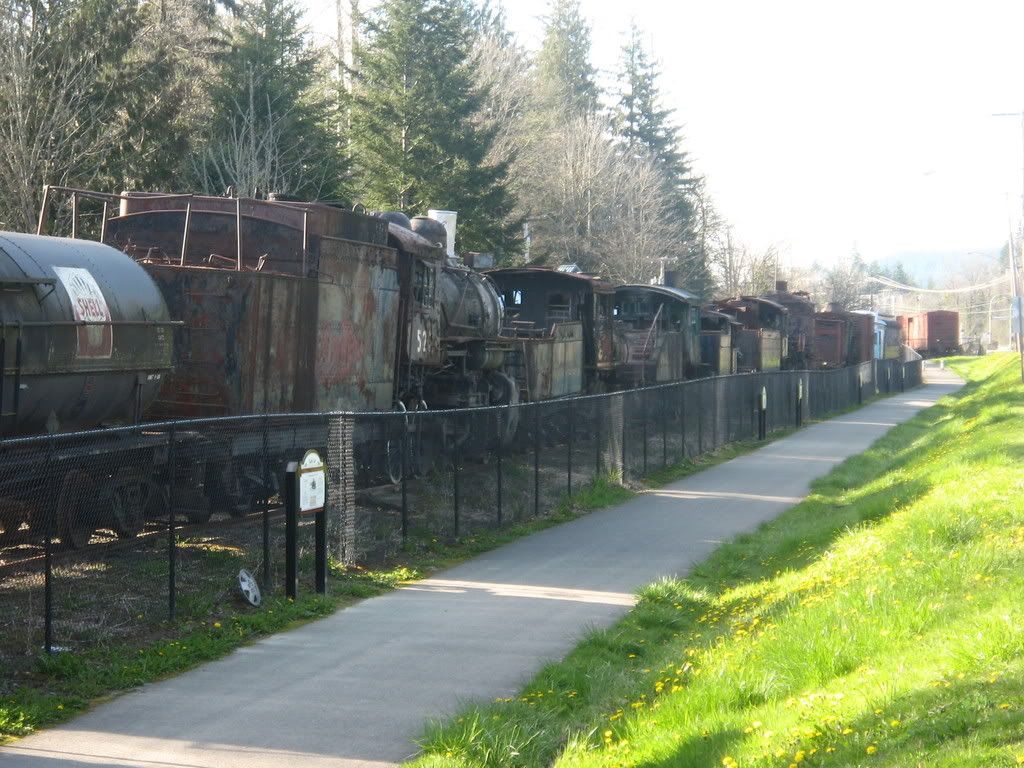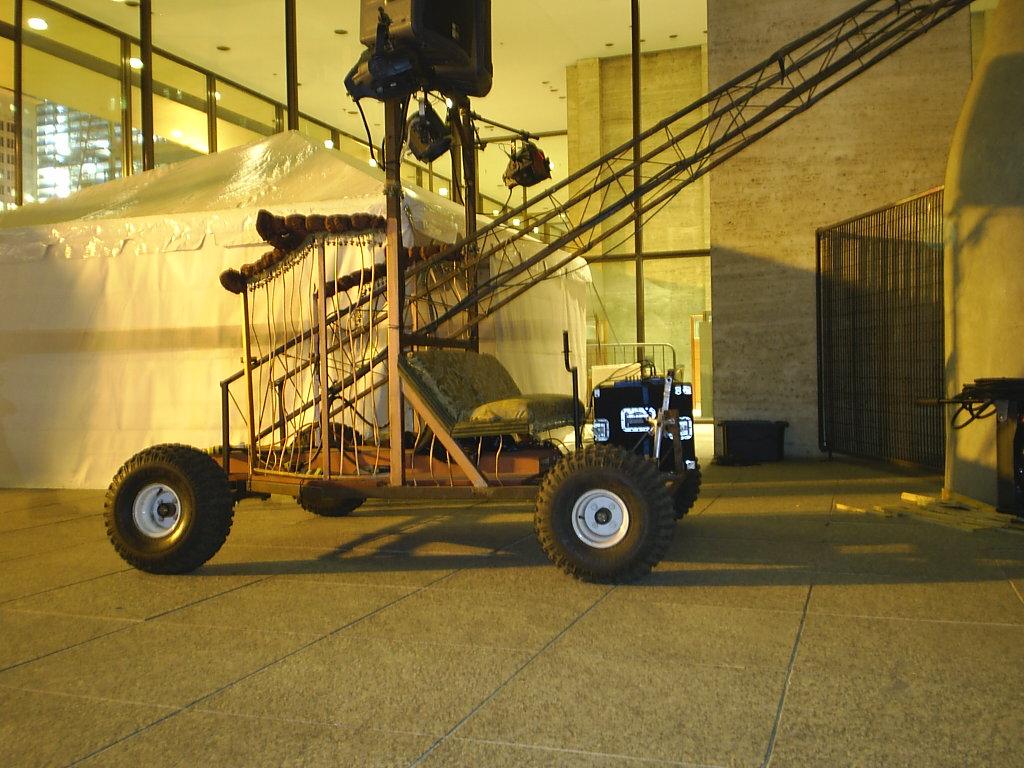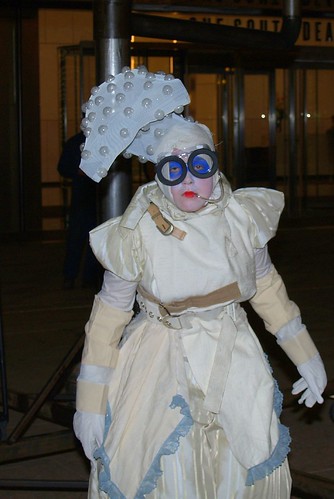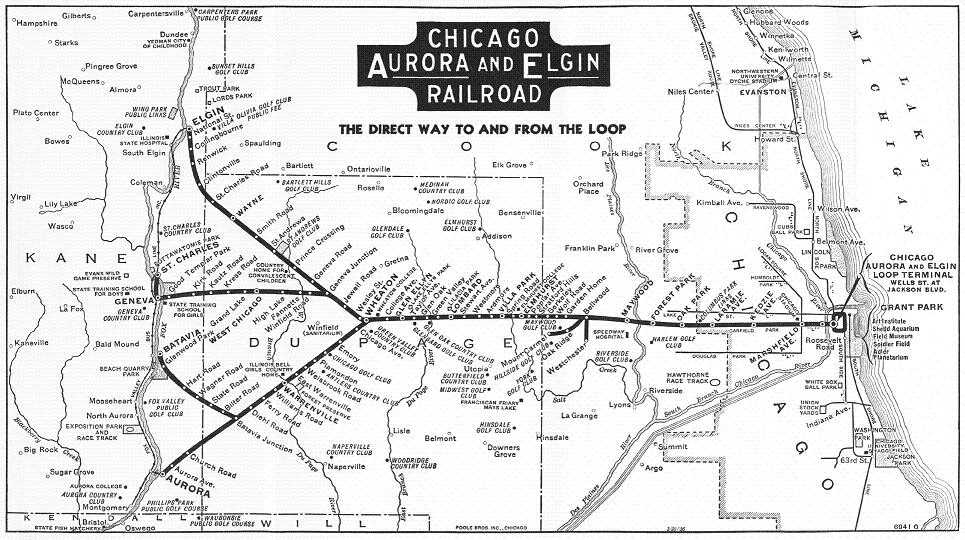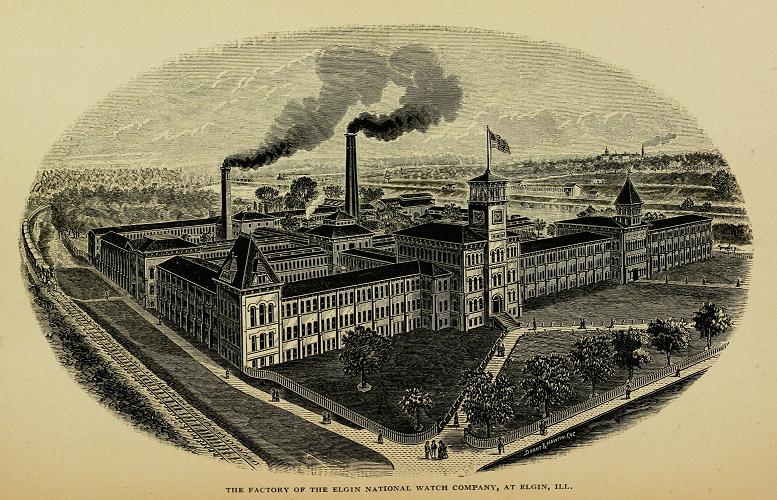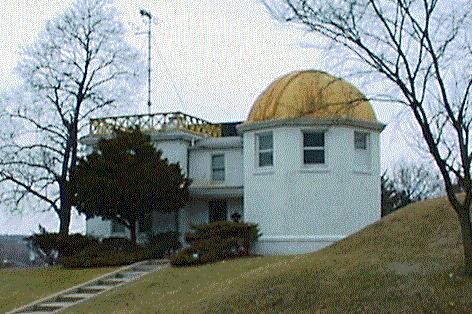1949 Ford F-6 Steam Conversion
Location: Mordo, South Dakota
I found this via Kinetic Steamworks. It's a 1949 Ford converted to steam. What's interesting about it is the elegance with which it's done- basically replacing the pistons in the V8 with steam pistons, but preserving the crankshaft so you can still use the original gearbox. The Neverwas Haul guys were working on converting an old Mercedes to steam for the Escape From Berkeley alternative-fuels race, and may just buy this one. It's up for auction on ebay as of the time of this posting, however, I've reposted the pictures here because they'll be gone once the auction's over!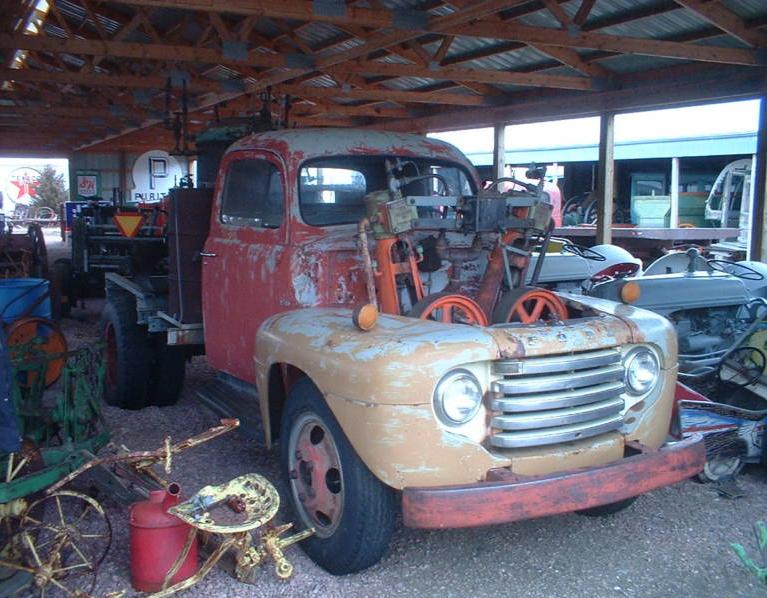
Here's the text from the auction:
This 1949 Ford F-6 2 ton truck that has been converted to steam power by some as of now unknown steam enthusiast many years ago.
As a mechanical engineer, I was quite surprised and fascinated with this conversion the first time I saw it several years ago. This truck is basically a complete and original Ford F-6 with an original type of Ford flat head V8 engine that someone removed the hood and radiator from. They also removed the V8 engine cylinder heads, pistons, connecting rods, camshaft, valve lifters and valves and left the original Ford crankshaft in place. They then bolted an adapter plate to the top of each cylinder bank. To each adapter plate is bolted a medium sized vertical single cylinder double acting steam engine. These engines appear to be identical and were made by the E. H. Wachs Company of Chicago, Illinois most likely about eighty to a hundred years ago. Each steam engine has a large roller chain sprocket on the crankshaft with a chain running down to a corresponding sprocket on the front of the Ford V8 engine.
The original Ford V8 engine basically acts as a mount for the 2 steam engines and a means of adapting the power from the 2 steam engines to the stock Ford clutch, 4 speed transmission and the rest of the drive train of the truck. The man who did this conversion evidently realized that a fire tube boiler anywhere large enough to supply both engines would be quite heavy and bulky and I suspect that is likely why he started with a truck that was large enough to haul the pair of engines, the boiler, the boiler feed water pump, the water tanks, the fuel tank and all of the rest of the plumbing, hardware and controls necessary to make this beast run and move. I saw a Model T Ford that someone made a very feeble attempt to convert to steam power several years ago and this truck is light years ahead of that Model T in terms of engineering and design.
The vertical fire tube boiler mounted near the center of the truck bed was built by the Eclipse Fuel Engineering Company wherever they were located about 80 to 100 years ago. I am not an expert when it comes to steam power so I don't have much more to say about this boiler. I have no idea as to what condition it is in and when it was last inspected by any state boiler inspector. It appears that the original grates have been removed and replaced with a steel plate with a pair of burners installed in the plate. There is a removable smoke stack about 10" in diameter by about 4' long laying on the back of the truck to the right of the boiler.
I am not sure what this truck used for fuel but am guessing that it may have been propane judging from the look of the pair of burners. There is no obviously visible propane tank that I noticed. Perhaps one is hidden inside one of the three 55 gallon barrels that is located near the front of the bed. There is no conventional truck bed on this truck. It is more like a frame work made of steel I-beams to hold the boiler, feed water pump and three 55 gallon barrels.
There is a pair of steel tube coils mounted between the pair of burners at the bottom of the boiler that may have been used as feed water heaters but I am not sure. Perhaps two of the three 55 gallon barrels hold water to supply the boiler. A relatively huge (for this application) steam powered boiler feed water pump is mounted to the left side of the bed. The inside of the cab appears to be quite stock with the exception of a steam pressure gauge and what appears to be some kind of hand operated pump on the right side of the floor of the cab. If this is not a feed water pump of some kind, perhaps it is for injecting steam cylinder oil into the steam going to the engines.
My friend that owns this truck has never had it running or ever seen it run. The pair of double acting engines are geared about 1 to 1 with the Ford V8 crankshaft and would produce 4 power pulses per revolution of the Ford V8 crankshaft. This would be the same number of power pulses per revolution of the typical gasoline powered V8 engine so I suspect this truck would run very smoothly. I don't know what it would weight but am guessing it's dry weight might be around 12,000 pounds or so.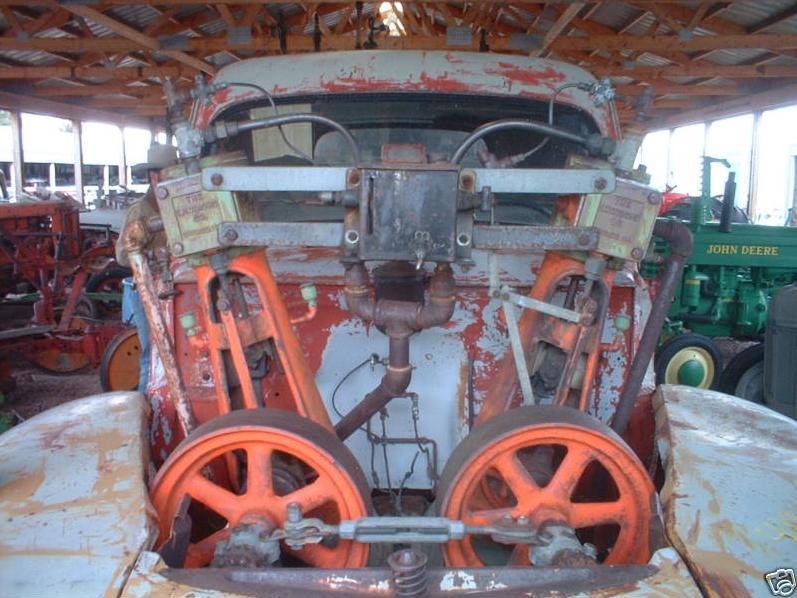
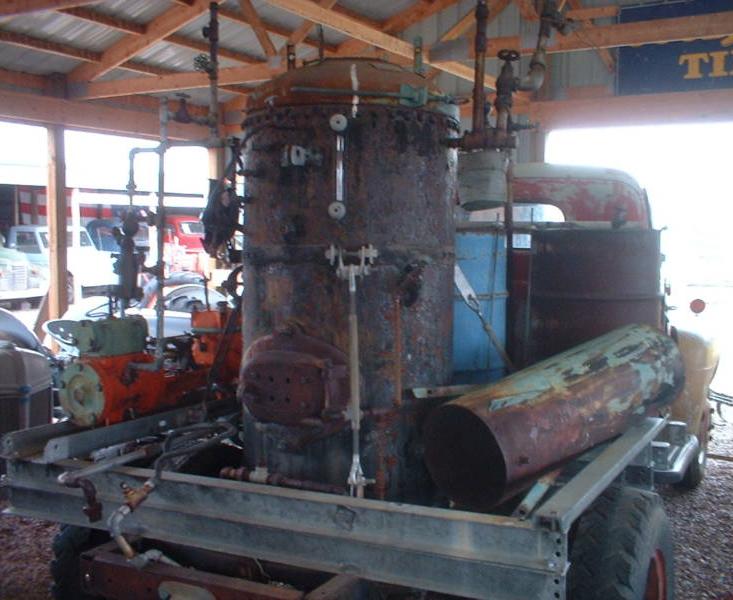
This vehicle is in the South Dakota Auto Museum- visit it!
View Larger Map
Here's a link to the auction.
Labels: mordo, southdakota, usa
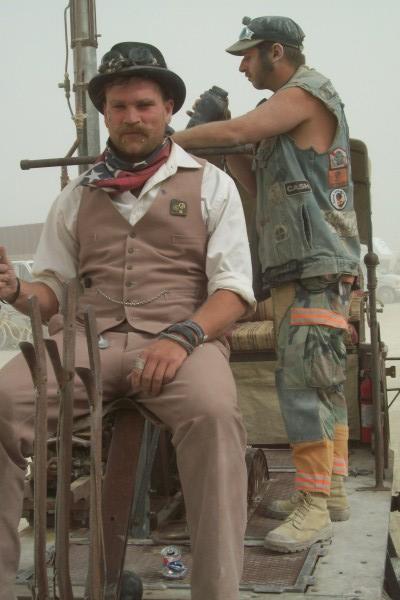 The Steampunk World
The Steampunk World
